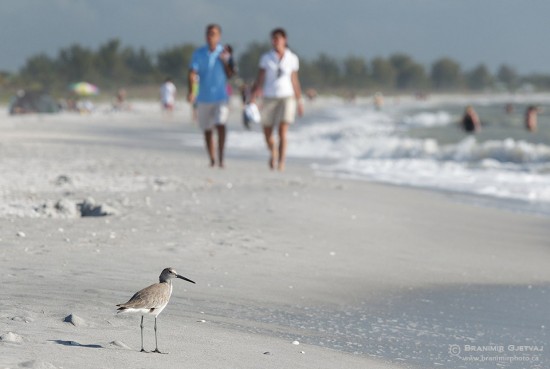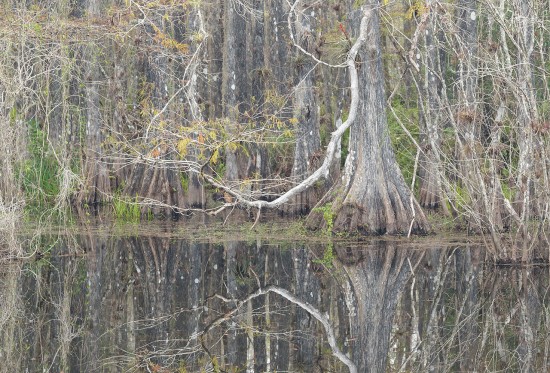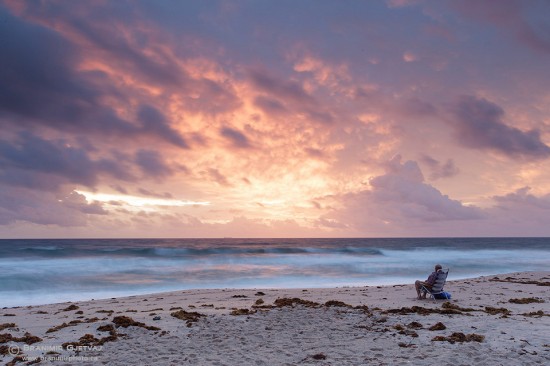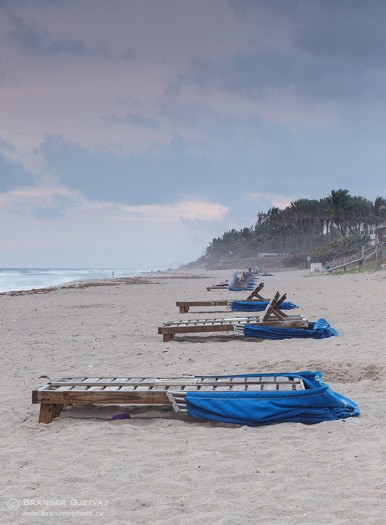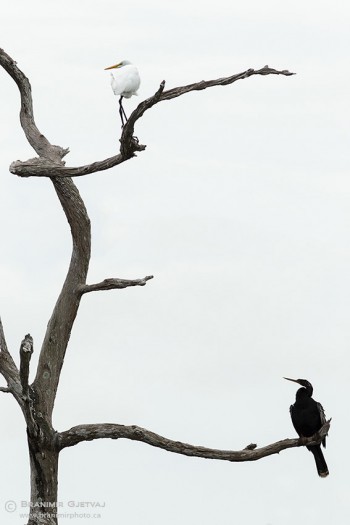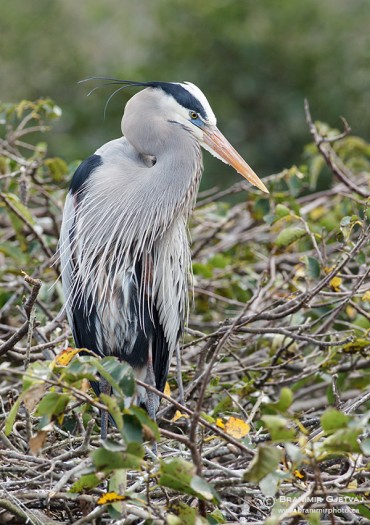I spent several days over the Christmas and New Years in Florida. Here is a selected recollection of memorable photography moments, and a few useful travel observations.
The primary goal of my trip was to visit in-laws and to recharge personal batteries. I did not expect to spend too much time travelling for the purpose of photography. Actually, I left Saskatoon with minimal expectations – I was prepared to be happy with whatever images I would capture during the holidays. I also took bare minimum of the photo gear, although I can not say that I travelled light. A solid tripod, one camera body (Canon 1D Mark IV), and three lenses: 17-40 mm f/4 wide-angle zoom, 70-200 mm f/4 telephoto zoom and a 400 mm f.5.6 telephoto lens. Canon 1D is not a camera that I would normally use for photographing landscapes. My primary goal was bird photography and I chose to bring this camera body for it’s fast frame rate and the 1.3x cropped sensor. Working with a 1.3x crop sensor effectively turned my 400 mm lens into a 520 mm lens.
Our home base was in Fort Myers, on the west coast of Florida. It is a great place for short day trips. Coastal beaches are only a few minutes away and there are several conservation areas ideally suited for observing and photographing birds. Probably the best known among photographers is J.N. ‘Ding’ Darling National Wildlife Refuge on Sanibel Island.
This image is from the Bowman’s beach on Sanibel Island. A gorgeous sandy beach, spreading for kilometres in east-west direction on the outer reaches of the island. A perfect place to look for shells or just enjoy the sun & ocean breeze. The beach is short walk from the parking lot situated at the end of the Bowman Beach Rd. (left turn from the main Sanibel-Captiva Road).There are picnic tables, rest rooms, showers and places to set up a barbecue. There is also a kayak & canoe launch area if you wish to explore the inshore channels.
Bowman’s beach (Sanibel Island, Florida) is also a good place to see birds. Many shorebirds, gulls, terns, pelicans and black skimmers feed along the water edge. They are generally not afraid of people and if you do not make sudden moves, they will allow you to approach very close. You should not abuse the privilege though, as the birds need time to rest and find food. This Willet – a shorebird – was briefly disturbed by beach walkers and quickly returned to look for food among sand disturbed by rolling waves.
Another good spot for nature photography in Ft. Mayers area is the Six-Mile Cypress Slough Preserve. The preserve was initiated in late 1970s by a group of Lee County students alarmed by the intrusion of development into this diverse wetland. They acted and saved the area from logging and draining, creating a preserve where people can visit and enjoy the vast array of plants and animals. Today the preserve is surrounded by housing and shopping malls of Fort Myers, providing a welcome oasis of natural world.
Although the preserve is good for wildlife photography at any time, I like going there when the cloud cover softens the sunlight to photograph elegant cypress trees. Here is one image of a jumble of pond cypress trees at the Six-Mile Cypress Slough Preserve. I have visited this spot several times as it allows for a good view of cypress tree trunks reflecting in calm waters of the Wood Duck Pond. The image might look messy to some but I just love the texture in tree canopy and a hint of colour present in winter months.
One day we drove to the Atlantic coast to do some bird watching and spent a night in Boynton Beach (just south of West Palm Beach). It was quite warm and overcast in Florida over the Christmas holidays was, and I did not see and photograph too many interesting sunrises. The image below is an exception. I used a 2-stop graduated filter to darken the skies and set the aperture opening to f/16. This allowed for a rather long exposure time of 4 seconds, enough to blur the motion of ocean waves.
There were a few other photographers on the beach that morning and I talked to a fellow who had a theory that cloud formations are more interesting further south, close to Miami. Something to do with the mixing of air currents between the Atlantic coast & Gulf of Mexico.
On the way back to Fort Myers, we stopped at two wetlands southwest of Boynton Beach. Green Cay is a 100-acre manufactured wetland that serves as a collector and natural purification treatment site for storm water inflow from the surrounding residential area (Green Cay Wetlands are located at 12800 Hagen Ranch Road, Boynton Beach FL). The planted wetland is visually attractive and has a variety of photogenic vegetation clusters. One can move around by following 1.5 miles of elevated boardwalk with interpretive signs about the plants and animals that inhabit SE Florida. There is also a large Nature Center with a lecture hall, gift shop, and supposedly a display with live animals in an extensive show room.
What attracted my interest to capture the image above was the graphic simplicity of a dark bird, Anhinga, resting on a denuded tree trunk. It was uniformly overcast so the background did not have too many distracting elements. I walked along the boardwalk to place myself until I could see only a few green branches from the other side of the pond (content-aware fill in Photoshop took care of those). While I was photographing the Anhinga, a Great Heron landed on the top branch. I managed to take a few images before the birds flew away. I chose to share this image because I like the apparent visual tension between the two birds that look and “point” in one direction and the tree branches lead the viewer’s eye in the opposite direction. The crop with a 400 mm lens is a bit tight for my liking but I could not do anything about it – I was already pressing with my back against a railing over an alligator-infested pond.
The second place we checked out was the Wakodahattchee Wetlands. This manufactured wetland is used as a natural filter to process remaining nutrients from about two million gallons of pre-treated waste water that is collected from the surrounding settlements. More than 140 different species of birds have been spotted at the site. There is a raised boardwalk from where you can photograph nesting herons, Anhingas and cormorants. Birds are not afraid of people and you can get really good close-up shots. I took this image with a 400 mm lens (520 mm lens equivalent).


